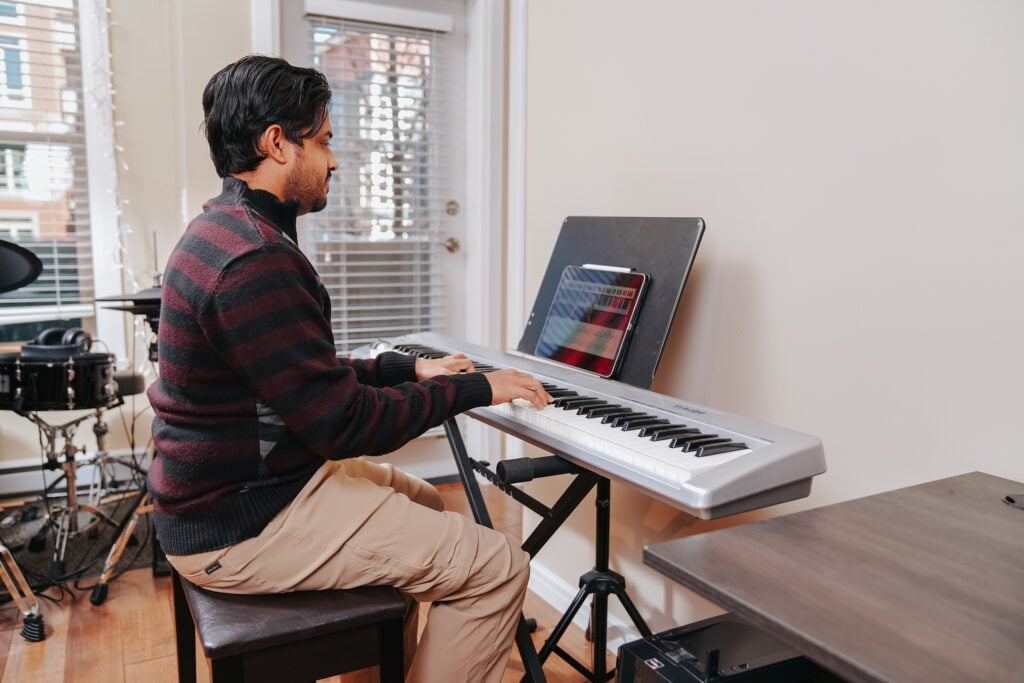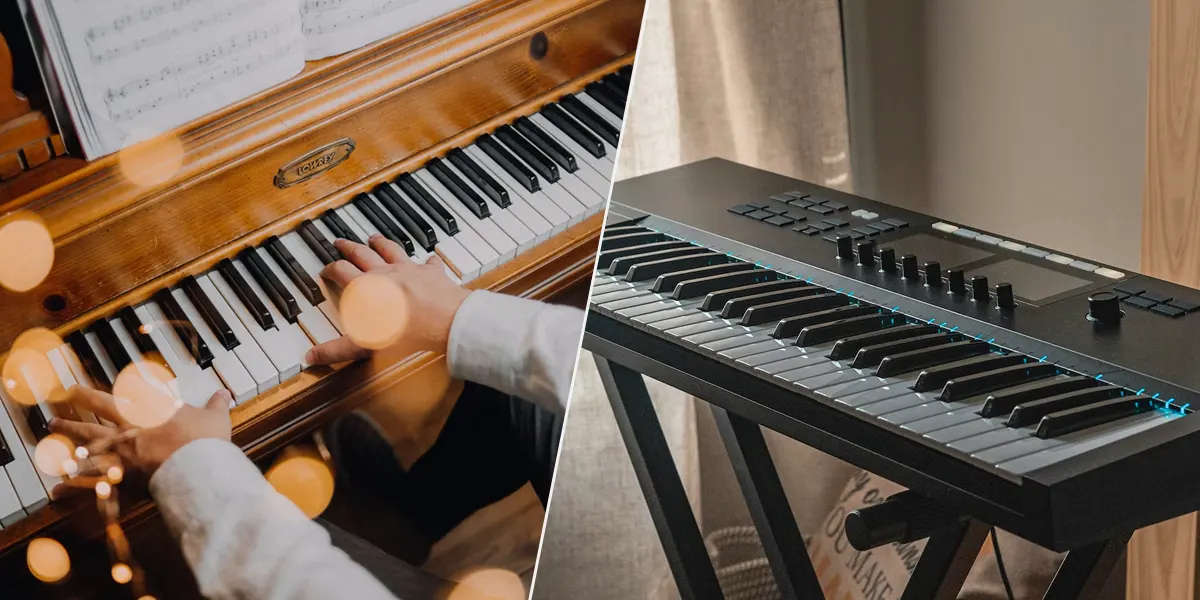
Learning music today involves choices between traditional keyboards, smart keyboards, and MIDI controllers. Understanding the differences between a smart keyboard vs MIDI controller is crucial for beginners and hobbyists. In this guide, you’ll learn which instrument fits your learning goals, connectivity needs, and musical workflow while exploring options like the Smart Keyboard.
Whether you’re just starting or upgrading, this guide covers everything from features and portability to long-term benefits.
A smart keyboard is a self-contained digital piano that combines traditional piano keys with interactive learning technology.
Ideal for learners:
Beginners benefit from guided lessons, visual cues, and pre-programmed songs. The PopuPiano Smart Keyboard, for example, makes home practice interactive and fun.
A MIDI controller does not produce sound on its own. Instead, it sends MIDI signals to computers, software, or other sound modules.
Ideal for learners:
Those interested in music production or composing in software like Ableton Live or Logic Pro will benefit most from a MIDI controller.
|
Feature |
Smart Keyboard |
MIDI Controller |
|
Sound Engine |
Built-in piano & instrument sounds |
None; requires external software |
|
Learning Tools |
Lighted keys, screen guidance |
Minimal; relies on software |
|
Portability |
Lightweight & standalone |
Very lightweight, highly portable |
|
Connectivity |
USB, Bluetooth, headphone out |
USB/MIDI, requires computer or device |
|
Ideal User |
Beginner to intermediate learners |
Producers, composers, or advanced learners |

Factors to consider:
Beginners focused on playing and learning piano fundamentals often benefit from a smart keyboard like the PopuPiano.
Music producers or electronic composers may prefer a MIDI controller for full DAW integration.
Smart Keyboard:
MIDI Controller:
External reference: MIDI connectivity guide – Sweetwater

This hybrid approach offers the best of both worlds for serious learners.
Not all smart keyboards are created equal. Some popular options for learners include:
|
Model |
Key Count |
Learning Features |
Connectivity |
|
PopuPiano Smart Keyboard |
61 keys |
Light-up keys, interactive app integration |
Bluetooth, USB |
|
Yamaha PSS-F30 |
37 keys |
Mini keys, onboard songs |
USB, headphone out |
|
Casio LK-S250 |
61 keys |
Lighted keys, Step-Up lesson system |
USB, headphone out |
Tip: Choose a model that grows with your skills and supports app-based learning.
MIDI controllers are more versatile for electronic music and DAWs. Some beginner-friendly models:
|
Model |
Key Count |
Special Features |
Connectivity |
|
Akai MPK Mini |
25 keys |
Pads, knobs, portable |
USB |
|
Novation Launchkey Mini |
25 keys |
DAW integration, pads |
USB, MIDI |
|
Arturia KeyStep |
32 keys |
Sequencer, arpeggiator |
USB, MIDI |
Tip: Consider key size, velocity sensitivity, and portability when selecting a controller for home practice.
Smart keyboards like the PopuPiano can connect with interactive apps to accelerate learning:
Quick tip: Using apps can make learning more engaging and help you track improvement over time.

For advanced learners or producers:
Benefit: You get the best of both worlds—guided learning and production capabilities.
Yes. Many smart keyboards, including the PopuPiano, can connect via USB or Bluetooth to DAWs, functioning as a MIDI input device.
Yes. MIDI controllers require software or hardware to generate sound, unlike smart keyboards which have built-in sounds.
Smart keyboards are typically better for beginners focused on learning piano fundamentals due to built-in sounds and guided lessons.
Yes. Many smart keyboards allow you to record performances internally or via connected apps.
Yes. It combines interactive learning features and can act as a MIDI controller for DAW integration.
Choosing between a smart keyboard vs MIDI controller depends on your learning goals. Beginners benefit from smart keyboards for interactive, all-in-one learning, while MIDI controllers cater to electronic music and production-focused learners.
For a versatile and beginner-friendly option, explore the Smart Keyboard to practice piano fundamentals while keeping future DAW integration possible.
Read more

Portable Keyboard vs Stage Piano for Home Practice
Choosing the right piano for home practice can be tricky. Should you go for a portable keyboard or invest in a stage piano? Each has unique strengths, depending on your space, playing style, and lo...

Keyboard Piano vs Synthesizer: Best for Beginners?
Learning to play the piano or create music digitally can be overwhelming with so many options. A common question among beginners is whether to start with a keyboard piano or a synthesizer. This gui...